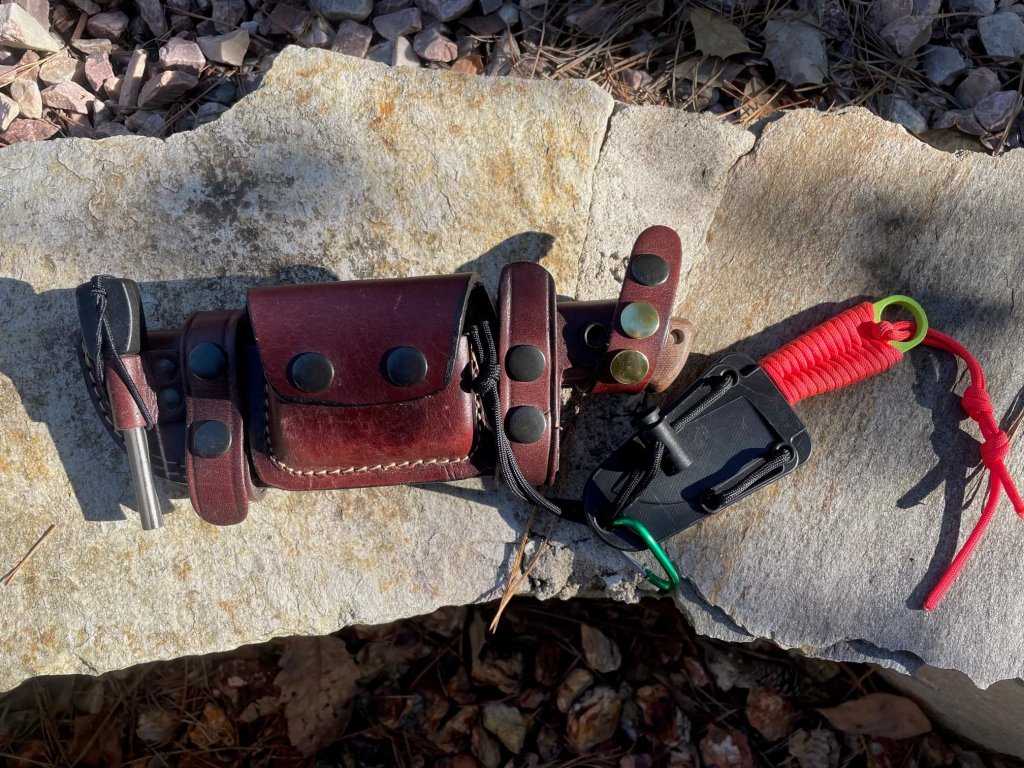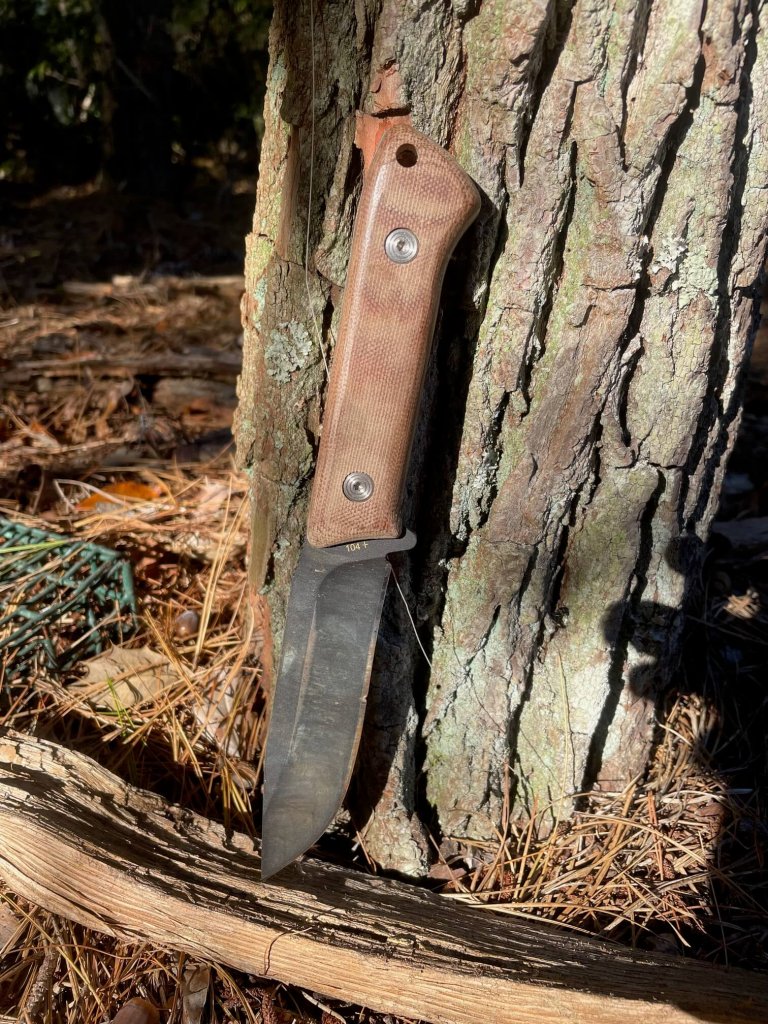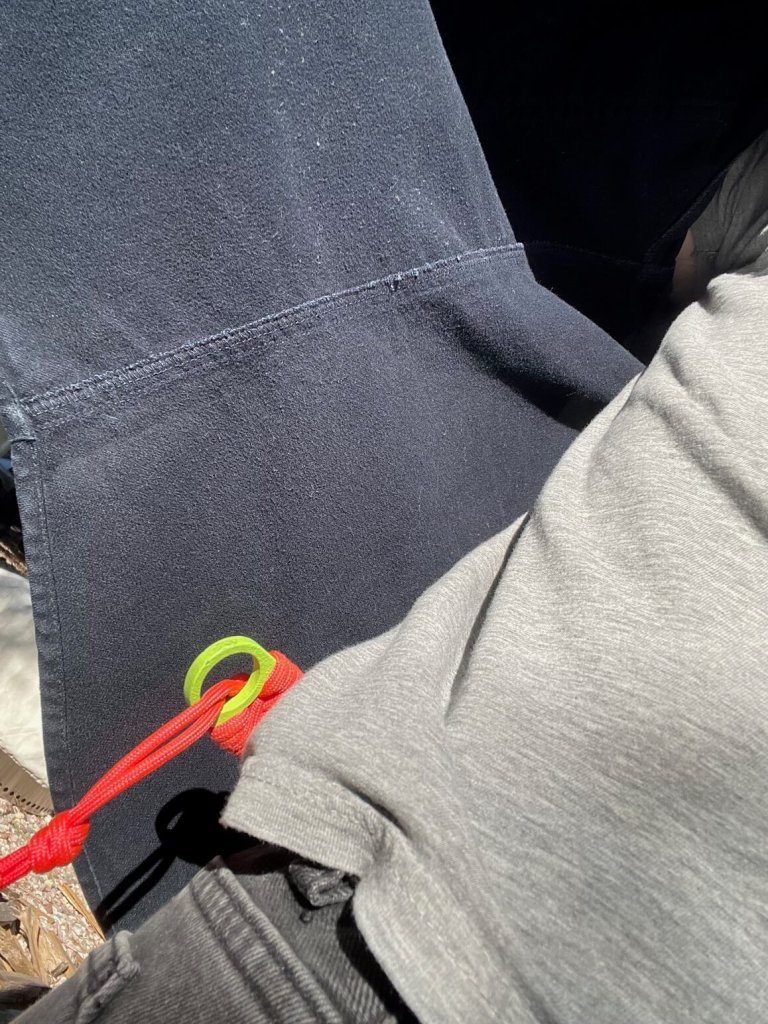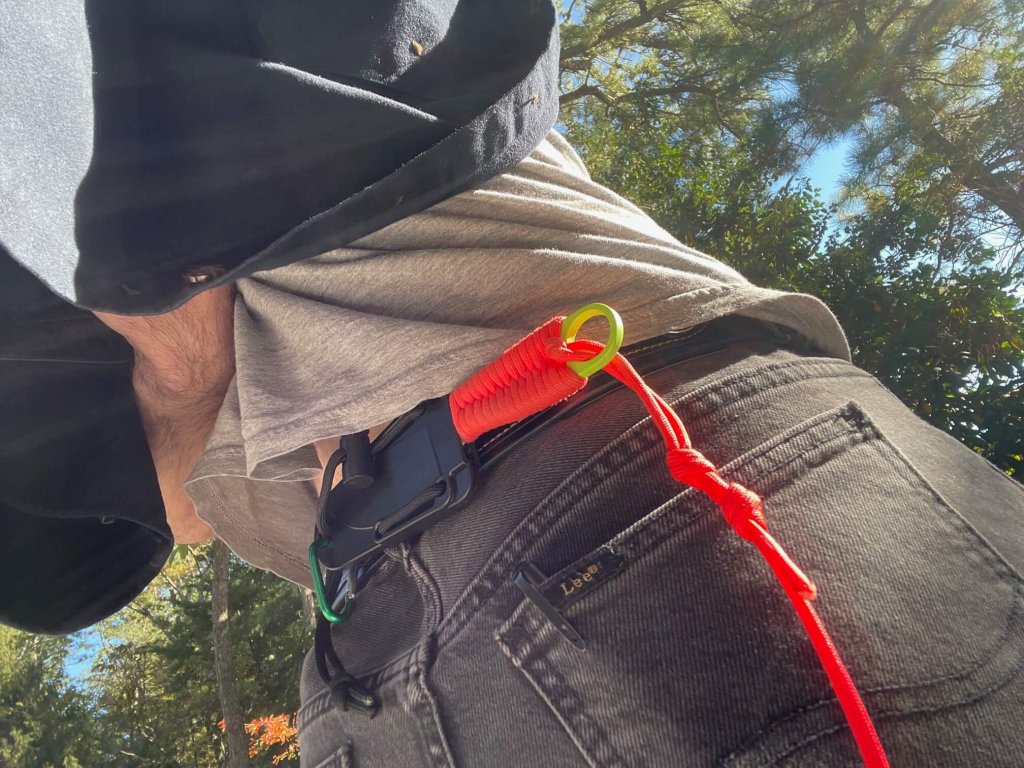
“You cannot swim for new horizons until you have the courage to lose sight of the shore.” ~William Faulkner
There are many, many ways to carry a fixed blade knife in its sheath; on your belt, tip down, tip up, lashed to a pack, cross draw, even drop leg or dangle carry.
But, far and away, when I carry a fixed blade, typically when fishing or hunting, I prefer to scout carry mine.
I’m convinced if you try it, you’ll think so too.
What Is Scout Carry?
To keep things as simple as possible, scout carry refers to carrying the knife horizontally at the back of your belt, usually with the edge down, oriented so that the handle is protruding towards your strong side, which makes it easier to draw.
This differentiates it from cross draw, which is similar but not the same. In a cross draw configuration, you carry the knife on the non-dominant side of your body, so that it is drawn across your body, hence the name.
Why Is Scout Carry Better?
There are numerous reasons that I prefer to scout carry. Some of the main ones I will cover here.
Out of the Way, Better for Larger Knives
Typically I carry a small knife like an ESEE Izula, but sometimes I carry something larger, like an ESEE 4 or a Buck Compadre. Just take a look at the Compadre in the image below.

That is a relatively big knife, intended for use as a camp knife, which should tell you all you need to know about the size and weight without me even needing to broach any specifications.
It does not carry comfortably on the belt in a tip down configuration, for multiple reasons. One is that the blade is long, which gets in the way of my leg. Sitting down is also uncomfortable because the sheath will hang up on whatever I’m sitting on.
Moreover, the knife is heavy enough that it creates a feeling of uncomfortable imbalance when it is on either the right or left side, which is effectively necessary when carrying tip down on the belt, on the dominant side, as is the custom.
Switch over to scout carry and all of these problems disappear.
Discretion

See my Izula scout carried on my back? This is one of the ESEE Izula mods I’ve recommended in the past. It’s small enough and has a compact enough profile that I can just flip my shirt over it and it’s concealed, for what that’s worth. It doesn’t impact me much since I’m in the woods or on the water when I’m carrying, but still, it’s worth something.
More Comfortable
As I’ve already stated, it is considerably more comfortable to carry in the scout carry configuration than any other manner I’ve carried, and I’ve practiced plenty.
It’s not that noticeable with a small knife like an Izula, especially since the one I usually carry has a wrapped handle and no scales, but anything larger, heavier or bulkier, and you’ll notice a difference.
More Intuitive

Say what you want, it doesn’t take too much getting used to before you’ll start instinctively reaching for the small of your back when you need to draw your knife. You might even find yourself “phantom drawing” when you’re not carrying. Go ahead and try.
The One Drawback: Resheathing
The forums are awash with potential drawbacks and safety concerns associated with scout carry, but there is really only one drawback that I have found, and it has to do with resheathing.
You need to be very careful when resheathing, not just so you don’t accidentally poke yourself, but so that you don’t get the blade inserted between your belt and the sheath, which can damage the leather, the cord, or whatever else has fastened it there.
I guide the tip of my blade into the throat of the sheath with my dominant thumb; that keeps my other hand safely out of the way and lets me know if I’m in the right place or not before I apply the pressure requisite to fully resheath the knife.
So, let me know in the comments: do you scout carry or not, and why?
Stay safe.
~The Eclectic Outfitter.